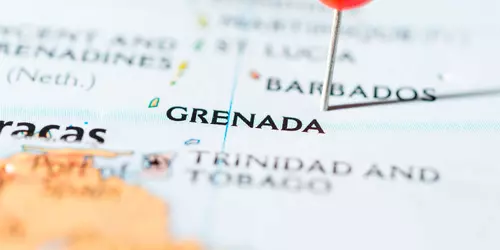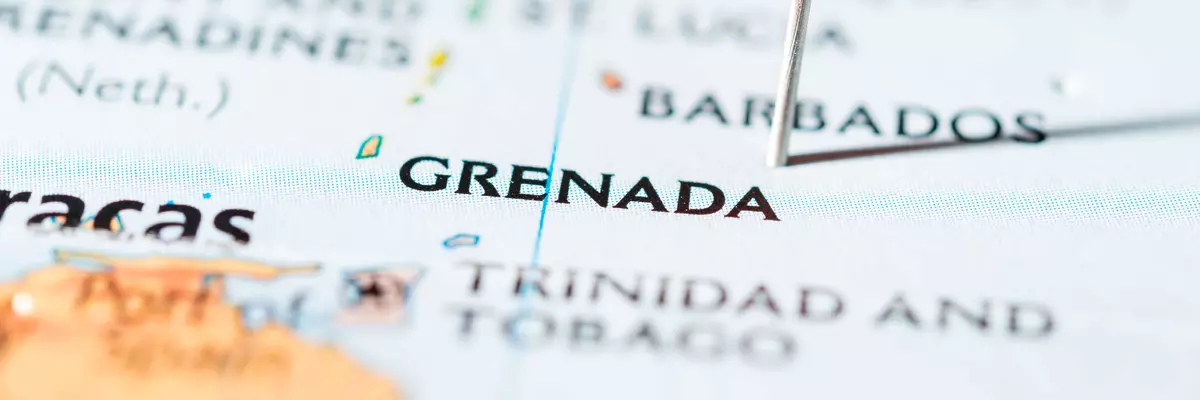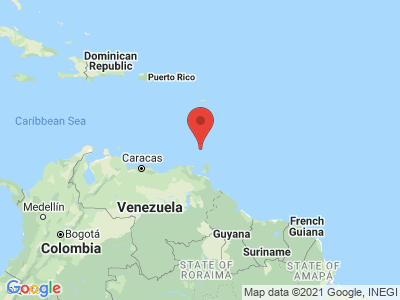Climate Table Grenada
Jan | Feb | Mar | Apr | May | Jun | Jul | Aug | Sep | Oct | Nov | Dec | |
|---|---|---|---|---|---|---|---|---|---|---|---|---|
| Max. Temperature | 28° | 28° | 28° | 29° | 29° | 29° | 29° | 29° | 30° | 30° | 29° | 28° |
| Min. Temperature | 22° | 22° | 22° | 23° | 24° | 24° | 24° | 24° | 24° | 24° | 24° | 23° |
| Sun Hours | 7 | 8 | 8 | 8 | 8 | 7 | 6 | 7 | 7 | 7 | 6 | 6 |
| Water Temperature | 26° | 25° | 25° | 26° | 27° | 28° | 28° | 28° | 28° | 28° | 28° | 27° |
| Rain Days | 16 | 10 | 11 | 9 | 11 | 19 | 19 | 19 | 16 | 15 | 19 | 15 |
The climate year of Grenada
The state of Grenada consists of several islands, which together form the Grenadines archipelago. The archipelago belongs to the Lesser Antilles. The main island, also called Grenada, occupies the largest part of the 344 km² state with an area of 310 km². The capital St. George's is also located on the main island. The islands, like almost all Caribbean islands, are of volcanic origin. The soil is very fertile, which, combined with the comparatively frequent rainfall, results in lush green vegetation at almost any time of the year. Whereby, due to the subtropical to tropical climate, there are no significant seasons on Grenada, but only a distinction between dry seasons and rainy seasons. Since Grenada belongs to the "islands above the wind" and thus to the direct influence area of the northeast trade wind, the climate is quite humid all year round. Even in the dry season it rains on average 12 days a month. By the way, the official head of state is the British Queen.
General information about Grenada
Grenada carries the epithet "The Spicy Island"(spice island). The reason for this are the numerous plantations, where especially nutmeg - one of the main exports - as well as cloves, allspice, cinnamon and cocoa thrive. A visit to a plantation (e.g. Dougalston Spice Estate) should definitely be part of a stay in Grenada. If you would like an expert guide, you can get one in the beautifully landscaped Laura Spice Garden. In the Westerhall Rum Factory - a rum distillery that is still active today - visitors can learn about the production of genuine Caribbean rum and, of course, buy some. Hiking enthusiasts can enjoy the wonderful natural landscape in the Grand Etang National Park. Here you will find spectacular waterfalls such as the Seven Sisters Waterfalls. The capital St. George's is also worth seeing. South of the city lies one of Grenada's most popular beaches, Grand Anse Beach.
Tourism Grenada
The island's tropical climate ensures consistent temperatures throughout the year, with the average annual temperature being around 28 °C. Due to the constantly prevailing northeast trade winds, rainfall is quite high, with by far the largest portion falling in the rainy season between June and December. On the coasts up to 1500 milliliters of precipitation per year are measured, in the mountainous interior even up to 4500 milliliters. It is somewhat drier in the dry season between January and March. During these months it is also somewhat cooler in Grenada, especially at night they can drop to as low as 18 °C. The rainy season is synonymous with the hurricane season, which can also wreak havoc on Grenada.


